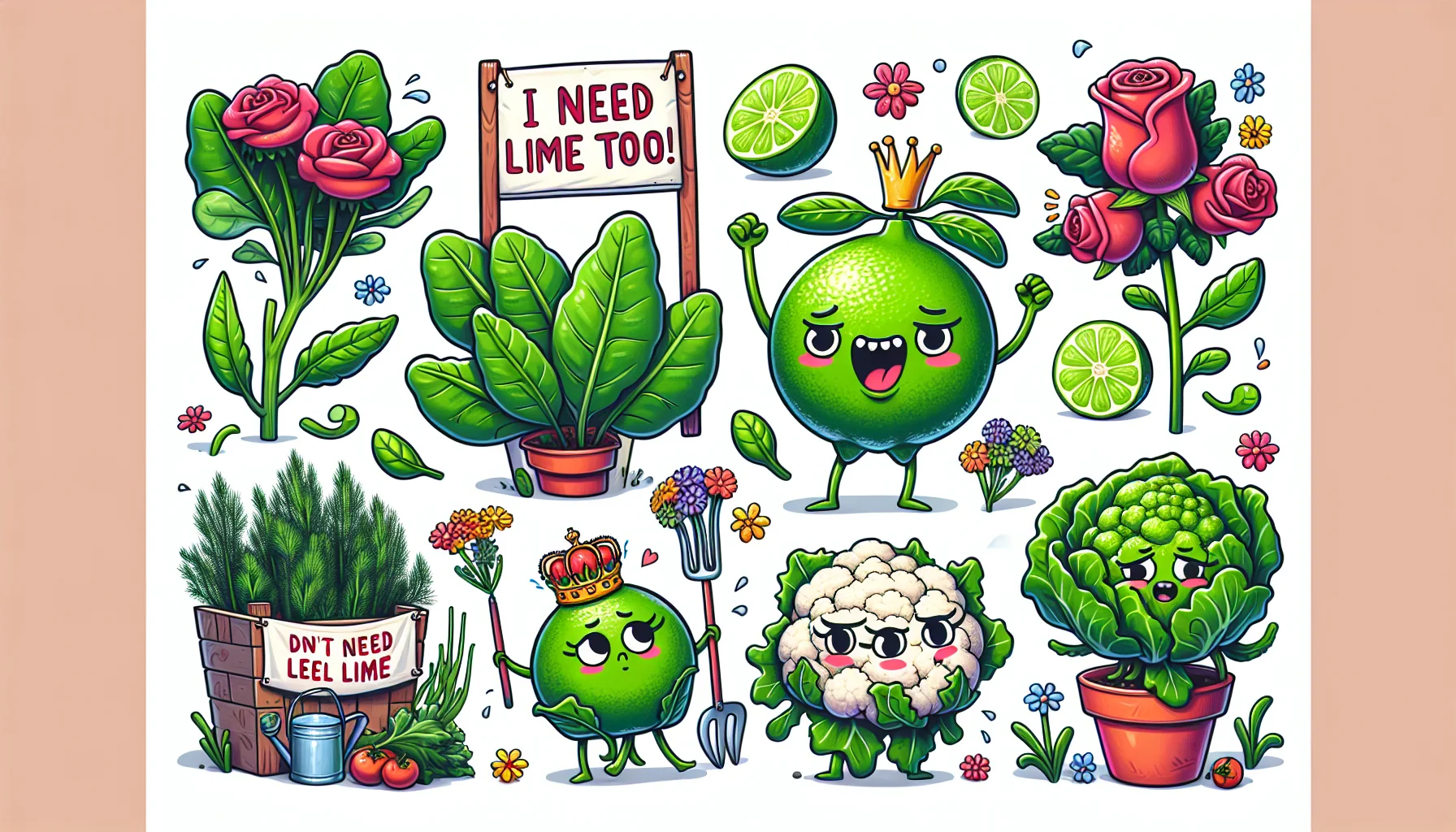What garden plants need lime Quiz
Test Your Knowledge
Question of
What Garden Plants Need Lime?
Lime plays a crucial role in gardening by adjusting the soil pH to become less acidic, which is beneficial for many plants. This adjustment helps improve soil structure, promotes beneficial bacterial activity, and makes nutrients more available to plants. When the soil pH is too low or acidic, it can limit the growth and health of garden plants. Adding lime to the soil increases the pH, making the environment more favorable for plants that prefer neutral to alkaline conditions. This can lead to healthier, more vibrant gardens with improved yields and flower production.
Understanding Soil pH and Its Impact on Plants
Soil pH is a measure of the acidity or alkalinity of the soil, expressed on a scale from 0 to 14, with 7 being neutral. Values below 7 indicate acidic soil, while values above 7 denote alkaline soil. This measure is crucial because it affects the availability of nutrients to plants and the microbial processes in the soil. Certain nutrients become more soluble and available to plants at specific pH levels. For instance, acidic soils can lead to an abundance of some micronutrients, such as iron, but can also cause a deficiency in others, like calcium and magnesium. Conversely, alkaline soils may limit the availability of iron, manganese, and phosphorus. Understanding and managing soil pH is essential for healthy plant growth, as it influences root development and the efficiency of nutrient uptake, directly impacting plant health and productivity.
Signs Your Garden Needs Lime
- Yellowing leaves on your plants, especially if this occurs in new growth
- Slow growth rates compared to expected growth patterns
- Soil testing reveals a pH level below 6.0, indicating high acidity
- Blossom end rot in tomatoes and other fruiting vegetables
- Poor lawn color or grass that doesn’t thrive despite proper care
- Presence of moss or weeds that favor acidic soil conditions
- Leaf tips and margins that turn brown on grass and other plants
- Fruits or vegetables that are smaller than expected or have poor flavor
Types of Lime for Garden Use
Lime is a valuable soil amendment that can help manage soil acidity and provide important nutrients to plants. There are several types of lime that can be used in gardens, each with its own specific benefits and uses. Agricultural lime, also known as garden lime or aglime, is made from crushed limestone and is used to raise the pH of acidic soils. Dolomitic lime, similar to agricultural lime, contains calcium carbonate along with magnesium, which is beneficial for plants that require high levels of this nutrient. Hydrated lime, or slaked lime, is a more concentrated form that is used to quickly adjust soil pH but must be used with care due to its potential to harm plants if applied improperly. Choosing the right type of lime depends on the specific needs of your garden soil and the plants you wish to grow.
Garden Plants That Benefit from Lime
- Asparagus
- Beets
- Broccoli
- Cabbage
- Carrots
- Cauliflower
- Cucumbers
- Garlic
- Leeks
- Lettuce
- Onions
- Peas
- Spinach
- Squash
- Tomatoes
- Apple trees
- Cherry trees
- Grapes
- Lilacs
- Peonies
- Roses
How to Apply Lime to Your Garden
Applying lime to your garden is a crucial step in ensuring the health and productivity of your plants. The process begins with testing the soil pH to determine if your garden actually needs lime. This is because lime is used to raise the pH level of the soil, making it less acidic. If the pH test indicates a need, the next step is to choose the right type of lime for your garden. There are mainly two types: calcitic lime, which adds calcium to the soil, and dolomitic lime, which adds both calcium and magnesium. It's important to select the one that best suits your soil's needs. The best time for lime application is during the fall or early spring, as it gives the lime ample time to adjust the soil pH before the growing season. Apply the lime evenly over the soil surface, using a spreader for larger areas or applying manually for smaller gardens. After application, lightly till the soil or water it in to help the lime penetrate the soil. Remember, the effects of lime are gradual, so it may take a few months to see significant changes in soil pH.
Lime Application Tips and Best Practices
- Test your soil's pH before applying lime to understand the necessity and amount required.
- Choose the right type of lime for your soil and plants. Calcitic lime adds calcium, while dolomitic lime adds calcium and magnesium.
- Apply lime in the fall or early spring to allow it to react in the soil and adjust pH before the growing season.
- Wear protective gear, including gloves and a mask, to avoid skin irritation and inhalation of lime dust.
- Spread lime evenly over the soil surface using a spreader to ensure uniform coverage and avoid over-application in areas.
- Incorporate lime into the topsoil by tilling or watering it in, to help it react more quickly with the soil.
- Water your garden lightly after applying lime to help it settle and start reacting with the soil.
- Re-test your soil's pH annually to monitor changes and adjust lime applications as necessary.
- Avoid applying lime near water sources to prevent contamination and protect aquatic life.
- Be patient; it can take several months for lime to fully adjust the soil pH and show benefits in plant health and productivity.












